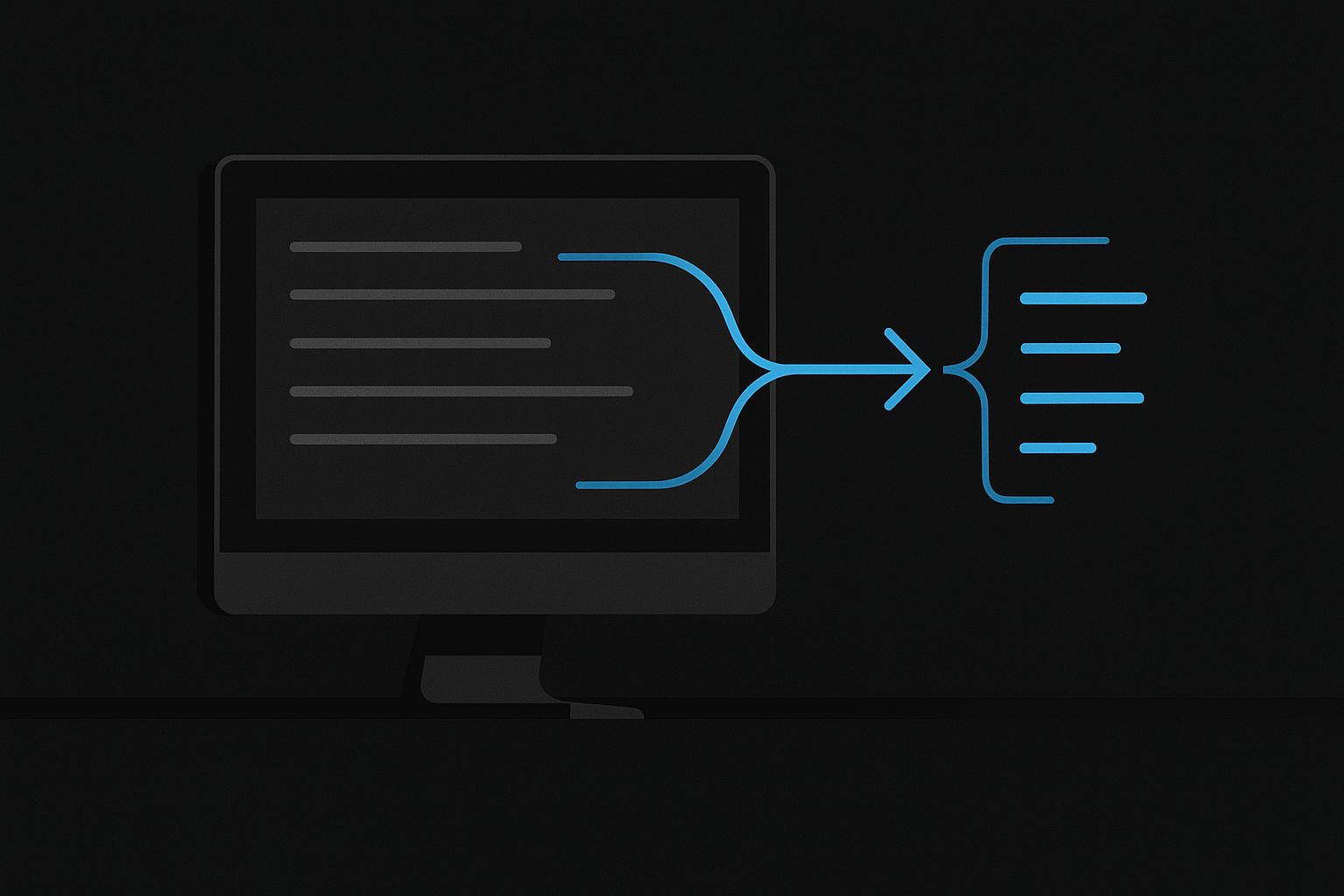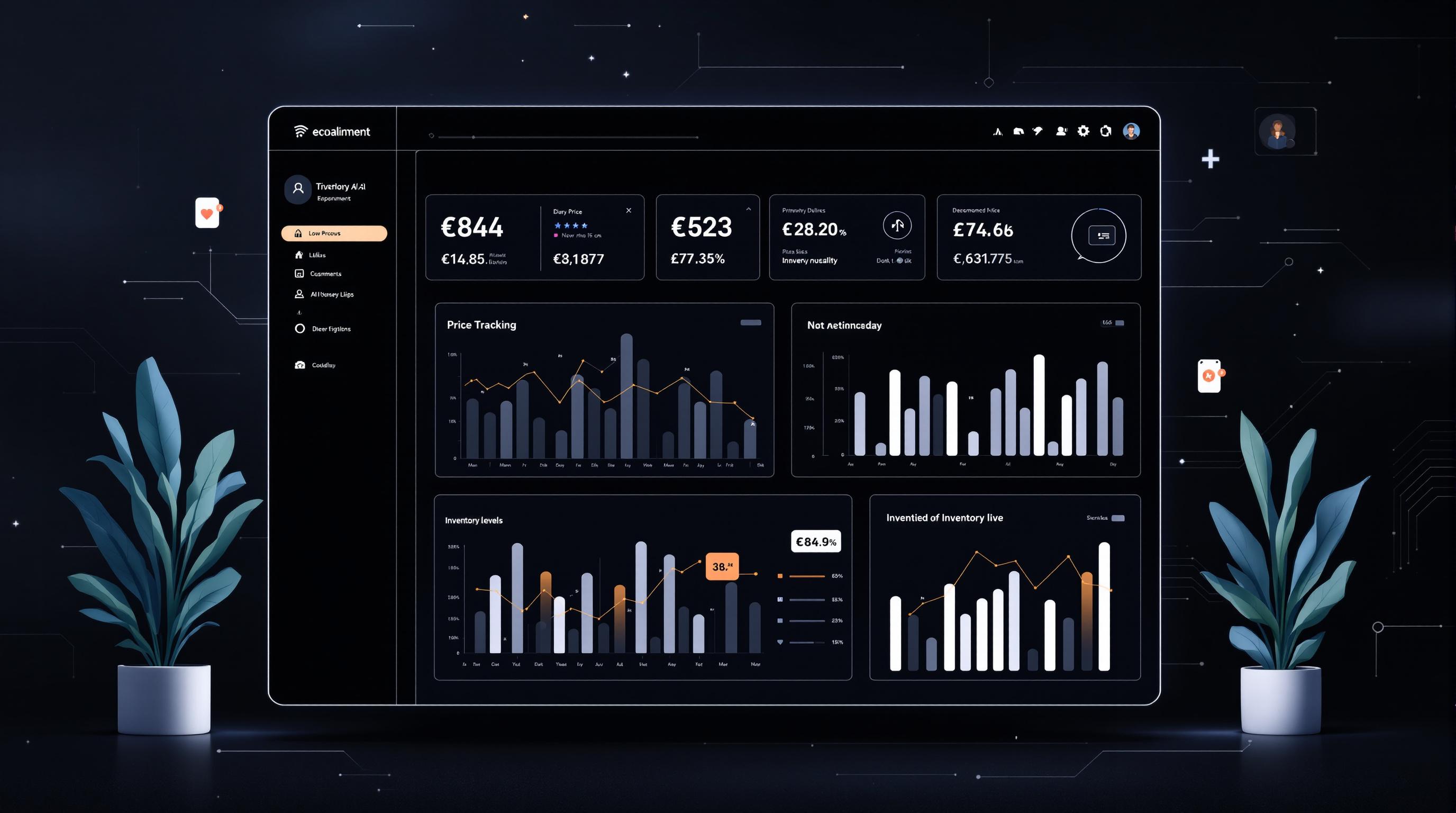Web scraping is changing how the entertainment industry understands audiences. Here's a quick look at how it's used:
- Understand Viewer Preferences: Platforms like IMDb and Netflix analyze millions of data points to predict trends, refine recommendations, and improve engagement. For example, 80% of Netflix's viewer activity comes from its recommendation system.
- Track Seasonal and Regional Trends: Data reveals that summer movies generate 39.6% of annual box office revenue, while winter releases average a 6.4 IMDb rating. Local events, like the surge in visitors to Los Alamos after Oppenheimer, highlight regional impacts.
- Social Media Insights: Scraping tools analyze hashtags, comments, and engagement from platforms like TikTok and X.com to perform sentiment analysis and gauge public reactions.
- Review and Rating Analysis: Platforms like IMDb provide direct insights into audience opinions, helping companies adjust strategies.
- Streaming Data: Metrics like watch time, abandonment points, and genre preferences are analyzed to improve user experiences.
Quick Comparison of Scraping Tools
| Tool | Best For | Key Advantage |
|---|---|---|
| BeautifulSoup | Static content | Easy for review sites |
| Scrapy | Large-scale crawling | Efficient for multiple platforms |
| Puppeteer | Dynamic content | Handles JavaScript-heavy sites |
| Cheerio | Fast parsing | Great for social media metrics |
Key takeaway: Web scraping helps entertainment companies make data-driven decisions about content, marketing, and audience engagement. By analyzing trends, preferences, and behaviors, they can better meet audience expectations while staying compliant with laws like GDPR and CCPA.
[Tutorial] How to scrape and analyze social media data
Web Scraping Uses for Audience Data
Scraped data plays a key role in shaping content and marketing strategies, especially in the entertainment industry. Here's how companies use it to better understand their audiences.
Social Media Data Collection
Automated tools gather information like comments, hashtags, and engagement metrics from platforms such as TikTok, YouTube, and X.com. This data helps perform sentiment analysis, offering real-time insights into public reactions. This is especially useful during content releases or PR events when quick feedback is crucial.
Review and Rating Analysis
Review platforms provide a direct window into audience preferences. Data from these sites helps evaluate content and spot larger consumer trends, influencing how companies adjust their strategies.
"IMDb is perhaps the most authoritative voice in movie and TV content for good reason - with 200+ million unique monthly visitors and over 500 million data items, the platform is a weatherglass for public opinion." - Brinda Gulati, Author, Grepsr.com
Streaming Platform Data Analysis
Streaming services use scraping to fine-tune content recommendations and improve viewer engagement. Here's how they analyze key metrics:
| Metric Type | Data Points Analyzed |
|---|---|
| Viewing Patterns | Watch time, completion rates, abandonment points |
| Genre Preferences | Popular categories, seasonal trends, regional favorites |
| User Engagement | Ratings, rewatches, content sharing |
| Platform Performance | Load times, buffering issues, user interface interaction |
Market Research and Analysis
Scraping helps track release schedules, measure campaign impact, and analyze demographic and regional trends. By monitoring social media mentions and online conversations, entertainment companies can quickly spot and address potential issues before they grow into major challenges.
Tools and Methods for Web Scraping
Common Scraping Tools
The entertainment industry uses a range of tools to gather audience insights effectively. Among the most popular are BeautifulSoup and Scrapy. BeautifulSoup is ideal for parsing static content, while Scrapy is a framework designed for large-scale crawling. For platforms with heavy JavaScript, like streaming services or social media, Puppeteer is a top choice for handling dynamic content.
Here’s a breakdown of some commonly used tools:
| Tool Type | Best For | Key Advantage |
|---|---|---|
| BeautifulSoup | Static content parsing | Easy to use for review sites |
| Scrapy | Large-scale crawling | Great for gathering data across platforms |
| Puppeteer | Dynamic content | Excellent for analyzing streaming interfaces |
| Cheerio | Fast parsing | Efficient for social media metrics |
Legal Guidelines and Privacy Rules
Once you’ve chosen your tools, it’s essential to stay compliant with legal and privacy regulations when collecting entertainment data. Laws like GDPR and CCPA shape how companies can gather and use this information.
"Even with public data, you must be careful not to break laws, especially concerning copyright." - Data Journal
Here are some crucial steps to ensure compliance:
1. Terms of Service Verification
Always check the terms of service for any platform before collecting data. Streaming services and review sites often have clear rules about data usage.
2. Privacy Protection
Take measures to anonymize data, especially when dealing with sensitive information like viewing habits on streaming platforms.
3. Data Usage Limitations
Define clear guidelines for how the data will be used. This is particularly important when analyzing social media reactions or audience demographics.
Technical Guidelines
To ensure smooth and reliable data collection, follow these best practices:
- Rate Limiting: Space out requests to avoid overwhelming platforms, especially during high-traffic events like major content releases.
- Data Validation: Use error-handling techniques to account for changes in platform interfaces, ensuring accurate results for metrics like streaming data or social engagement.
- Authentication Management: Use proper headers and adhere to platform API protocols to manage authentication effectively.
Balancing speed, reliability, and compliance is key to successful web scraping in the entertainment sector. By following these guidelines, you can maintain high-quality data collection without running into legal or technical issues.
sbb-itb-f2fbbd7
Data Processing and Analysis
Data Cleanup Methods
Cleaning raw data is a critical step to uncover meaningful insights. Aligning data formats from various sources ensures consistency. For metrics like streaming durations, convert them into uniform time units and eliminate duplicate records.
Here are some essential cleanup steps for entertainment data:
1. Format Standardization
Data often comes in various formats. Standardize elements like dates, times, and numerical values. For instance, convert international date formats to the U.S. standard (MM/DD/YYYY) and ensure all viewing durations are measured in the same units (e.g., minutes instead of hours).
2. Handling Missing Data
Entertainment data often has gaps, especially in user-generated content. Address these issues by:
- Filling in missing ratings with average values from a series
- Removing incomplete viewer profiles
- Flagging sessions where content was only partially viewed
3. Noise Reduction
Filter out irrelevant or misleading data that could distort analysis:
- Exclude bot-generated interactions on social media
- Remove viewing sessions under 30 seconds
- Clean text data by eliminating special characters and standardizing text case
Once the data is cleaned, it becomes easier to create visualizations that turn complex numbers into clear audience insights.
Data Visualization Steps
Processed data can be transformed into visuals that reveal patterns and trends. The type of chart or graph you use depends on the kind of entertainment data you're working with.
| Data Type | Recommended Visualization | Application |
|---|---|---|
| Viewing Trends | Line Charts | Show audience engagement over time |
| Genre Preferences | Pie Charts | Display distribution across categories |
| Rating Distribution | Bar Graphs | Compare show or movie performance |
| Audience Demographics | Heat Maps | Highlight viewer density by region |
When designing visualizations:
- Define a clear objective for each chart
- Use colors that make the data easy to interpret
- Always add labels, legends, and annotations for context
These steps help turn raw numbers into actionable insights that support deeper audience analysis.
Audience Pattern Analysis
Studying audience behavior helps refine content strategies and marketing efforts. Look for trends that directly impact decision-making.
Key metrics to focus on include:
1. Viewing Patterns
Understand how and when audiences engage with content:
- Peak viewing times
- Binge-watching habits
- Points where viewers abandon content
- Cross-platform viewing behaviors
2. Engagement Indicators
Measure how audiences interact with content:
- Average time spent watching
- Completion rates
- Sentiment on social media
- Platform-specific engagement metrics
"Our data shows a 20% increase in social media engagement after our latest campaign, suggesting that our new strategy is resonating well with our audience." - Sam N., Automation Alchemist
3. Demographic Insights
Spot trends within specific audience segments:
- Preferences based on age groups
- Regional popularity of certain content
- Device usage trends
- Genre preferences by demographic
Tools like Tableau or Power BI can help create interactive dashboards, enabling real-time tracking of these patterns. This allows for quick adjustments to align with audience behavior and emerging trends.
Building a Scraping System
System Setup Steps
To create an effective scraping system for entertainment data, start by isolating dependencies and following these steps:
1. Environment Configuration
Set up a dedicated Python virtual environment to keep your project clean and organized:
python -m venv entertainment_scraper
source entertainment_scraper/bin/activate # Mac/Linux
.\entertainment_scraper\Scripts\Activate # Windows
Next, install the required libraries:
pip install requests pandas beautifulsoup4
2. Target Structure Analysis
Understand the structure of your target website. Focus on these key aspects:
- HTML elements that contain valuable viewer data
- How dynamic content is loaded (e.g., JavaScript rendering)
- Rate-limiting rules to avoid being blocked
- Any authentication requirements for accessing data
3. Data Storage Setup
Decide on a storage solution - either a database or structured files like JSON or CSV. Use this to store metrics such as:
- Viewing statistics
- Engagement metrics
- Metadata about the content
Once the storage setup is ready, automate data collection to ensure scalability and efficiency.
Automation and Growth
To scale your scraping system, focus on automation and resource optimization. This reduces manual effort and avoids redundant data collection. Key areas to address include:
-
Request Management
- Add intelligent delays between requests to prevent server overload
- Use rotating proxy pools to avoid IP bans
- Monitor response codes and adapt request patterns when necessary
-
Data Pipeline Integration
- Automate data validation checks to ensure accuracy
- Set up error logging and notifications for quick debugging
- Implement incremental updates to avoid re-scraping the same data
Entertainment Industry Examples
A well-constructed scraping system can provide powerful insights for the entertainment industry. Companies use these systems to turn raw data into actionable strategies. For instance:
- Netflix integrates multiple data sources to analyze viewer sentiment, helping them make informed decisions about content licensing and programming.
- The Weather Channel uses its WeatherFX platform to link weather patterns with viewer habits, improving ad placements.
Here are some real-world applications:
| Company | Implementation | Results |
|---|---|---|
| Netflix | Viewer sentiment analysis | Better content licensing decisions |
| Warner Bros. | Marketing campaign analysis | More efficient ad spending |
| BookMyShow | Predictive performance tools | Enhanced promotional offers |
These examples show how a well-planned scraping system can drive smarter decisions and improve audience engagement in the entertainment world.
Summary
Web scraping has reshaped how decisions are made in the entertainment world. Major platforms showcase how data-driven approaches can improve audience engagement and drive results.
Big events have caused noticeable changes in audience behavior, boosting local business revenue. These examples show how web scraping helps businesses understand and respond to audience needs effectively.
"The winners in the entertainment industry will be those who can collect, analyze, and operationalize large amounts of data at scale." - Brinda Gulati, Author, Grepsr.com
Leading companies use web scraping to fine-tune recommendations, advertising, and promotional efforts. By gathering and analyzing large amounts of data, they can better understand audience preferences and adjust their strategies.
The film industry is a great example of this shift. By analyzing data, studios can predict trends, reduce financial risks, and tailor content to match viewer interests. Understanding seasonal trends and audience habits allows entertainment companies to make smarter decisions and connect with their audiences more effectively.
Web scraping has introduced a new way of working in entertainment. Data insights now shape content creation, marketing plans, and audience engagement efforts. As the technology advances, it offers even better tools for understanding and meeting audience expectations.


